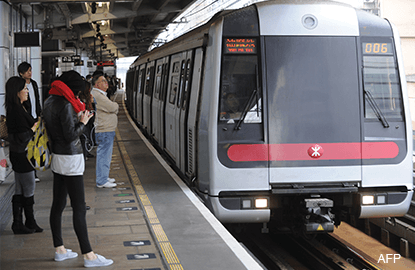
This article first appeared in The Edge Financial Daily, on January 18, 2016.

GEORGE TOWN: The Penang state is mulling various avenues to finance the operation of the rail system that forms part of its Transport Master Plan (TMP), among which is the set-up of a revolving fund with recurring rental revenue from property leasing once its planned 3,000-acre (1,214ha) land reclamation in the south of the island to finance the construction of the RM27 billion TMP is completed.
It is also considering taking full ownership of the entire rail system — comprising the light rail transit (LRT) and the monorail — as part of its long-term financial plan for the state’s transportation sector.
For starters, Chow Kon Yeow, Penang’s local government, traffic management and flood mitigation committee chairman, said the revolving fund could finance the operation of the LRT, which will be managed privately by a company selected via open tender.
“Public transport is a public good, so having a fund would be better. But it is too premature to identify [how much the] fund [needs] for operating costs. That will be subject to the contract awarded to the system operator … it will be on commercial terms.
“It would be ideal that once the approval is given, the operator comes in to work on the design and engineering with the consultant, although the construction of the system will take four to five years to complete,” he told The Edge Financial Daily.
But the state will not offer the use of the fund to the operator for maintenance or help with operation costs if it fails to run the infrastructure efficiently or if it incurs losses, said Chow.
He added that it will be a challenge to even meet the operation expenses of the planned rail system, but indicated that the state will take a leaf from Hong Kong’s management of its mass transit railway (MTR) system, which has proven to be profitable, as its revenue does not come only from ticket sales.
“You cannot rely solely on ticket fares. It (the rail system) [has to also] generate income from advertisements,” he said.
Chow was asked to comment on the financing model the state would take on to fund the entire RM9.7 billion rail system, which is regarded as the key to alleviating traffic under the RM27 billion Penang TMP.
On Aug 14 last year, the state appointed Gamuda Bhd-led SRS Consortium as the project delivery partner for the TMP. Also part of the consortium are Penang-based Ideal Property Development Sdn Bhd and Loh Phoy Yen Holdings Sdn Bhd.
Chow also said running a public transportion system using state funds is not really a novel idea, as it is similar to the federal government’s way of compensating highway concessionaires by using public funds to halt or delay toll rate increases.
Alternatively, Chow said the state can set up a department — like an LRT/monorail department — to run the rail system, as the capital expenditure for the infrastructure would be funded via land sales (on the reclaimed sites). This means the system will belong to the state.
“After owning the asset, we can run the system ourselves through the set-up of a department. We [may] establish a Public Transportation Corp to oversee the processes, and eventually, [the entity will] take over the asset in the future.
“We will then appoint operators (as in concessionaires). These are the ideas we are discussing now as it demonstrates our long-term vision to sustain the operation [of the rail system],” he said.
The first priority of the TMP is the LRT linking Komtar and Bayan Lepas, he said, followed by the Pan Island Link, a 20km road connection that connects Tanjung Bungah to the Penang International Airport.
As for the LRT connecting George Town and Butterworth, and the monorail between Tanjung Bungah and George Town, those will be part of Phase Two that may take off 10 to 15 years later, according to Chow.
The detailed environmental impact assessment studies for the Bayan Lepas LRT and the land reclamation are expected to be completed and submitted to the department of environment by the end of June.